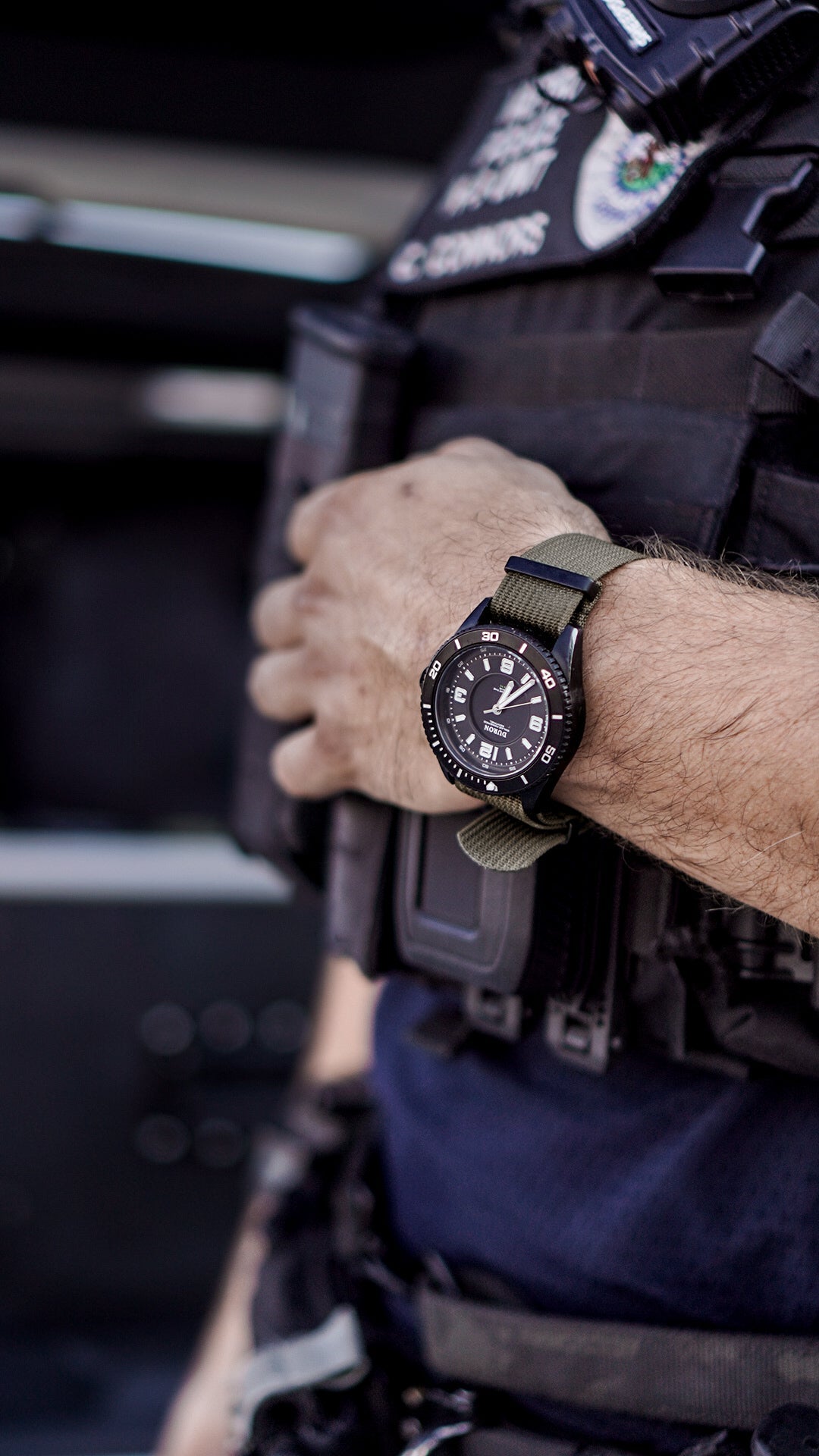Automatic watches, also known as self-winding watches, are a type of mechanical watch that doesn’t require a battery to function. Instead, they’re powered by the motion of the wearer’s wrist. This is thanks to a small internal rotor that winds the watch’s mainspring as it moves, which stores energy to keep the watch ticking. Here's a breakdown of the key aspects of automatic watches:
1. How They Work:
- Movement and Rotor: The rotor is a semi-circular weight that moves with the motion of your wrist. As it moves, it winds the mainspring (the power source), which then releases energy gradually to drive the watch’s hands.
- Power Reserve: Most automatic watches have a power reserve, which means they can keep ticking for a certain number of hours even if you're not wearing them. This reserve could range from 24 to 72 hours, depending on the watch.
2. The Appeal of Automatics:
- No Battery: Since automatic watches don't require batteries, there's no need to worry about replacing them. This is appealing to people who prefer more traditional watchmaking or want to avoid the environmental impact of disposable batteries.
- Craftsmanship: The complexity and engineering involved in making an automatic movement is often considered a major appeal. Mechanical watches, in general, are highly valued for their craftsmanship, and automatic movements are seen as more intricate and refined.
- Longevity: With proper care, automatic watches can last for generations, sometimes becoming heirlooms passed down through families.
3. Benefits of Automatic Watches:
- No Need to Wind by Hand (if worn regularly): The natural motion of your wrist keeps the watch powered, so it typically doesn't need manual winding as long as you wear it consistently.
- Mechanical Beauty: For watch enthusiasts, there's a certain beauty in seeing the gears and the intricate movement inside the watch. Many automatic watches have transparent case backs so the wearer can admire the movement at work.
- Accuracy: While automatic watches can be slightly less precise than quartz (battery-powered) watches, many high-end automatics are incredibly accurate due to fine-tuned engineering.
4. Downsides of Automatic Watches:
- Accuracy: Automatic watches generally lose or gain a few seconds per day. High-end mechanical watches can be more accurate, but they're still not as precise as quartz movements.
- Maintenance: These watches require occasional servicing to maintain the movement and ensure longevity. Over time, oils inside the watch may dry out, or parts may wear down and need replacing. A good service might be required every 3-5 years.
- Power Reserve: If not worn for a few days, the watch will stop, and you’ll have to reset it (unless you use a winder to keep it ticking).
5. Popular Types of Automatic Watches:
- Diver's Watches: These are designed for underwater use and often have features like high water resistance, rotating bezels for tracking dive times, and large luminous markers.
- Dress Watches: Sleek and often more formal, these are perfect for special occasions or professional settings.
- Pilot’s Watches: Known for their legibility and sometimes large size, these watches often have additional complications (like chronographs) and are associated with aviation.
- Sports Watches: Typically durable and designed for active use, they might feature chronograph functions, date windows, and other practical features.
6. Famous Automatic Movements & Brands:
- Swiss Movements: Swiss-made automatics, like those from ETA, Sellita, and Valjoux, are known for their reliability and precision. Many high-end brands use or modify these movements.
- In-House Movements: High-end brands like Rolex, Patek Philippe, and Omega often design and manufacture their own movements, which can add exclusivity and value.
- Japanese Movements: Brands like Seiko and Citizen have a long history of producing quality automatic watches. The Seiko 7S26 movement, for example, is one of the most iconic automatic movements for entry-level collectors.
7. Common Features Found in Automatic Watches:
- Date/Day Display: Many automatic watches include a date or day function, often changing automatically at midnight.
- Chronograph: This feature turns the watch into a stopwatch, allowing you to time events, often by using buttons to start, stop, and reset the timing.
- Moonphase: Some high-end automatic watches feature a moonphase complication, which tracks the phases of the moon.
- Skeleton Watches: These watches have a transparent dial or case back that lets you see the inner workings of the movement, often in a beautiful and intricate design.
8. Caring for an Automatic Watch:
- Wear Regularly: If worn every day, the watch will wind itself. If you don't wear it, you may need to wind it manually (or use a watch winder).
- Avoiding Magnetic Fields: Strong magnetic fields can mess with the accuracy of the movement, so it’s wise to keep the watch away from things like electronics that can emit strong magnetic fields.
- Regular Servicing: Periodic servicing is crucial for longevity. This might include cleaning, oiling, and adjusting the movement as needed.
Are you considering picking up an automatic watch? Or are you just curious about how they work? There’s so much variety out there.




Share:
Solar Watches
5 Reasons Why Every Man of Character Needs a Rugged Watch